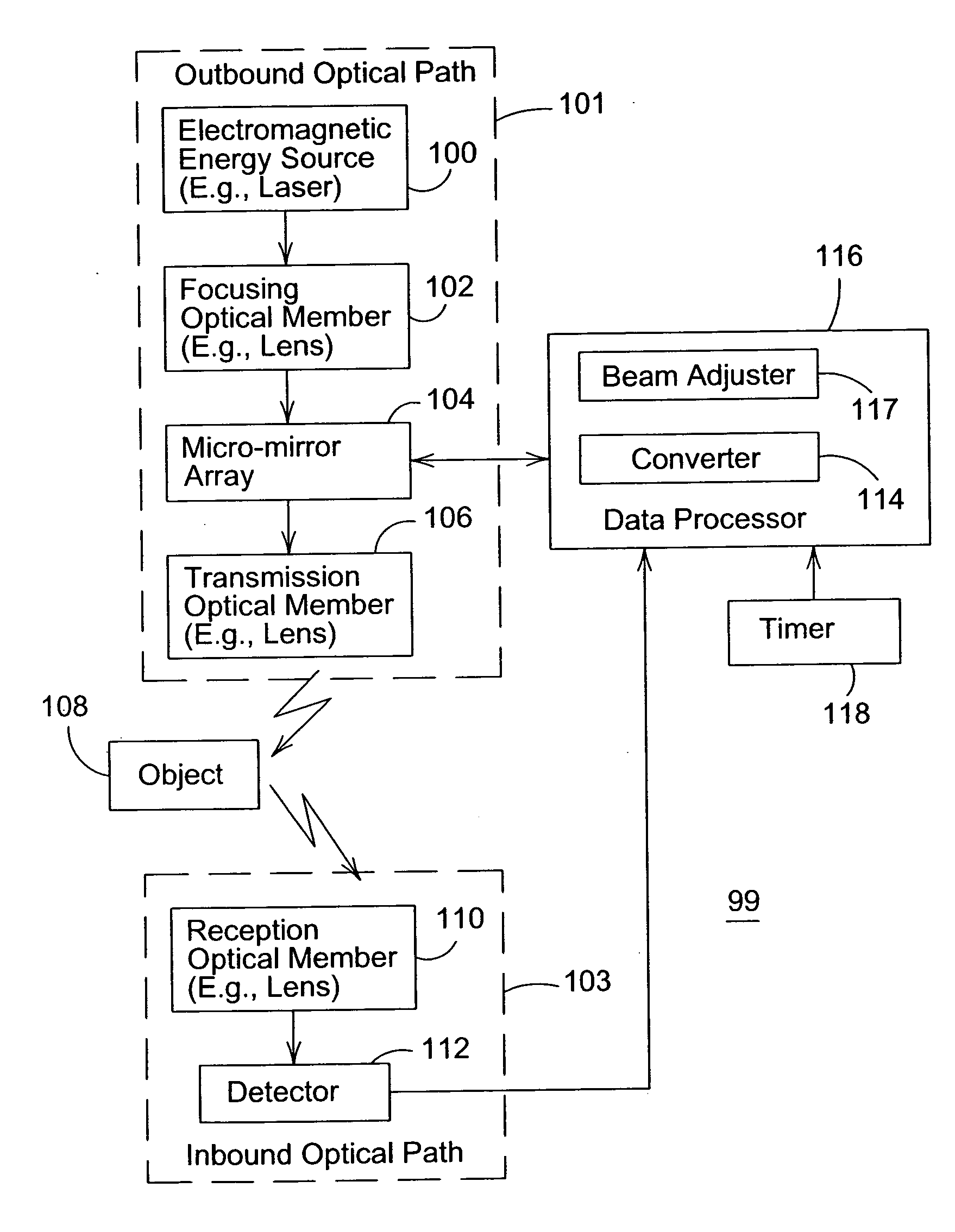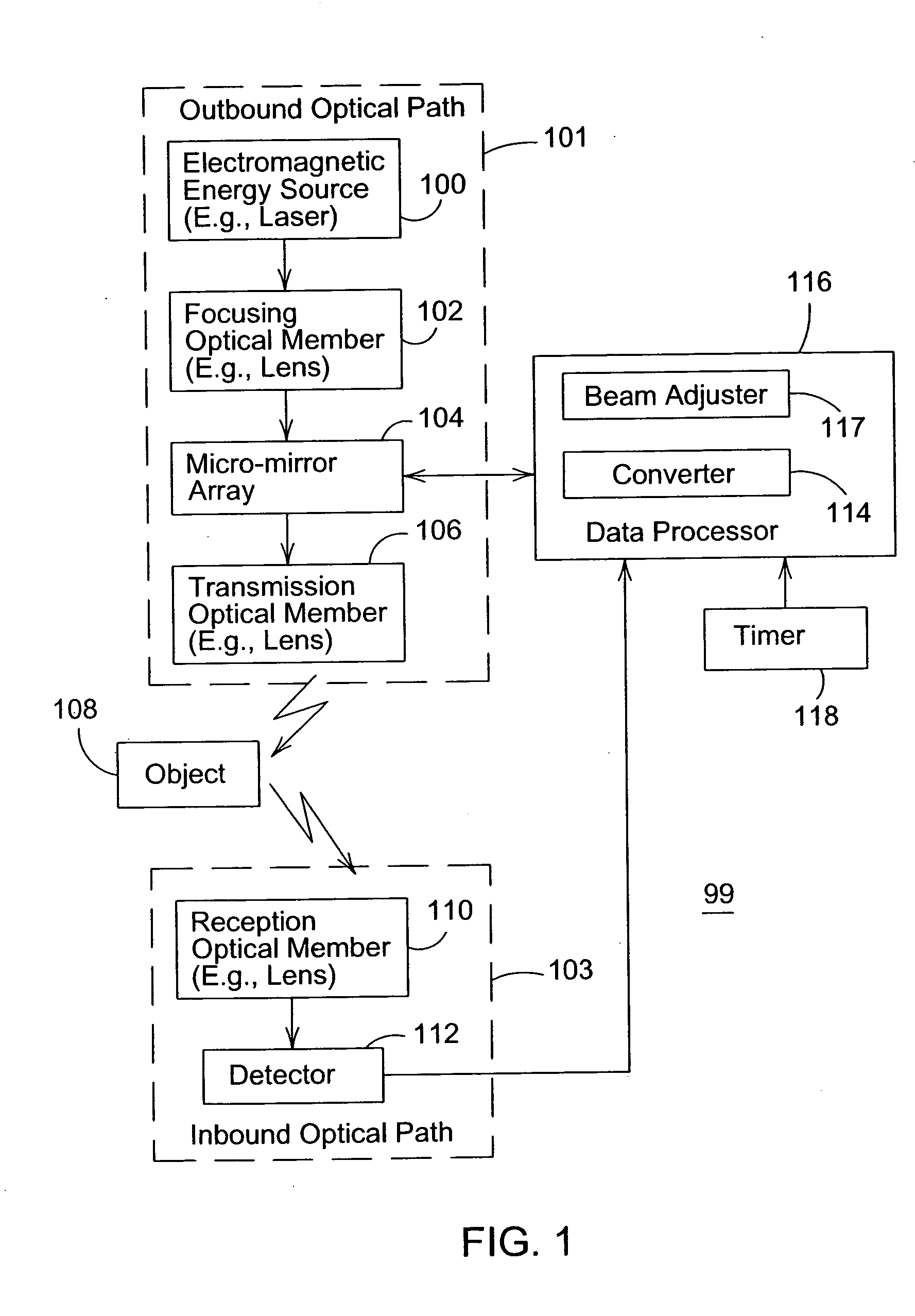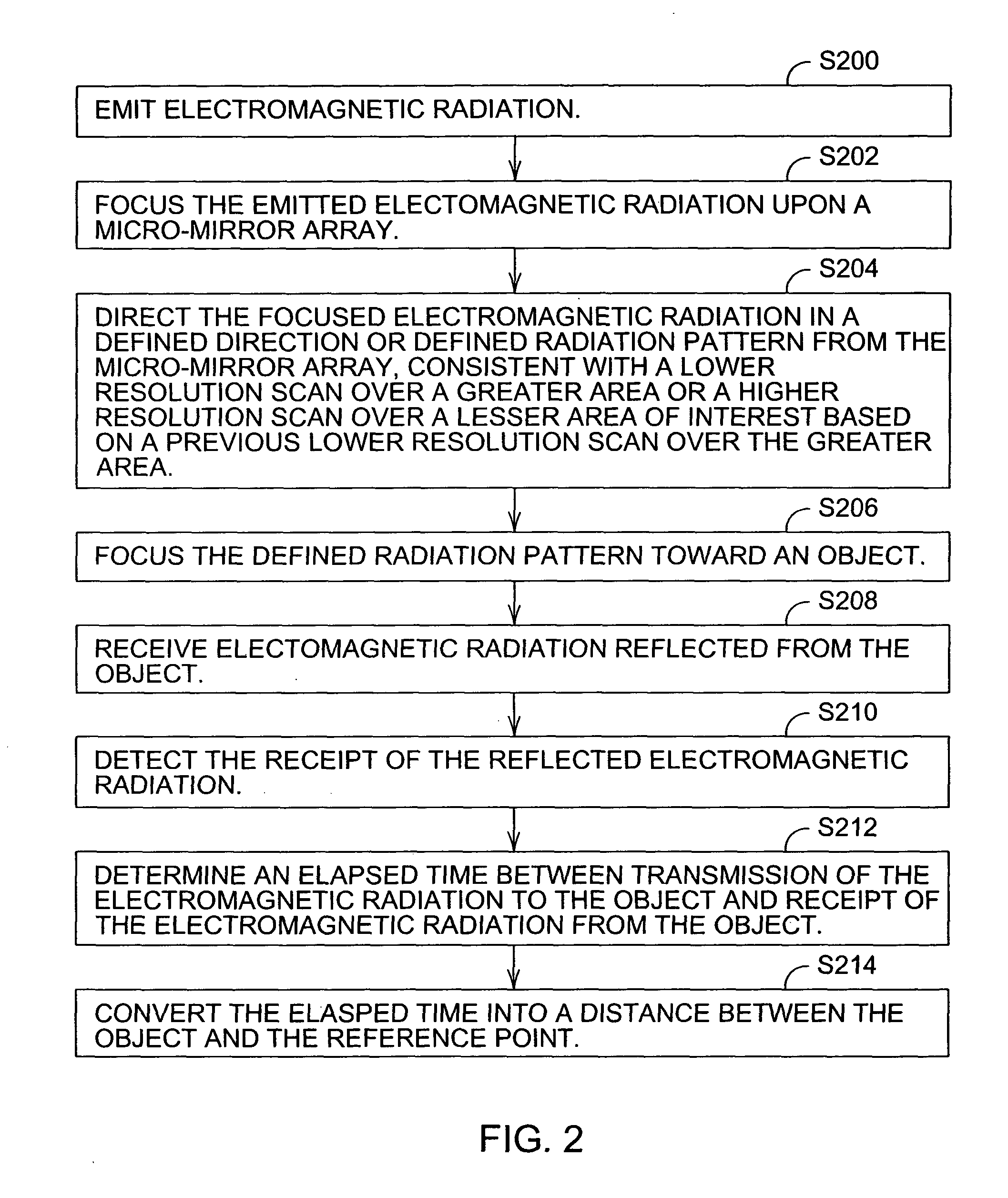Optical range finder with directed attention
a laser range finder and directed attention technology, applied in the direction of distance measurement, instruments, surveying and navigation, etc., can solve the problems of affecting the performance affecting the range of motion of the laser range finder, and requiring high production costs
- Summary
- Abstract
- Description
- Claims
- Application Information
AI Technical Summary
Benefits of technology
Problems solved by technology
Method used
Image
Examples
Embodiment Construction
[0012]FIG. 1 shows a block diagram of an optical range finder 99 for determining the distance of an object 108 from a reference point. The reference point may be defined with reference to the range finder 99 or a portion thereof. The optical range finder 99 comprises an outbound optical path 101 and an inbound optical path 103. The outbound optical path 101 is associated with an electromagnetic signal (e.g., a pulse or pulse train) transmitted from the range finder 99 toward an object 108, whereas the inbound optical path 103 is associated with the reflected electromagnetic signal received by the range finder 99. The outbound optical path 101 comprises an electromagnetic energy source 100, a focusing optical member 102, a micro-mirror array 104, and a transmission optical member 106. The inbound optical path 103 comprises a reception optical member 110 and a detector 112.
[0013] The optical range finder 99 comprises an electromagnetic energy source 100 (e.g., a laser) that emits ele...
PUM
 Login to View More
Login to View More Abstract
Description
Claims
Application Information
 Login to View More
Login to View More - R&D
- Intellectual Property
- Life Sciences
- Materials
- Tech Scout
- Unparalleled Data Quality
- Higher Quality Content
- 60% Fewer Hallucinations
Browse by: Latest US Patents, China's latest patents, Technical Efficacy Thesaurus, Application Domain, Technology Topic, Popular Technical Reports.
© 2025 PatSnap. All rights reserved.Legal|Privacy policy|Modern Slavery Act Transparency Statement|Sitemap|About US| Contact US: help@patsnap.com



